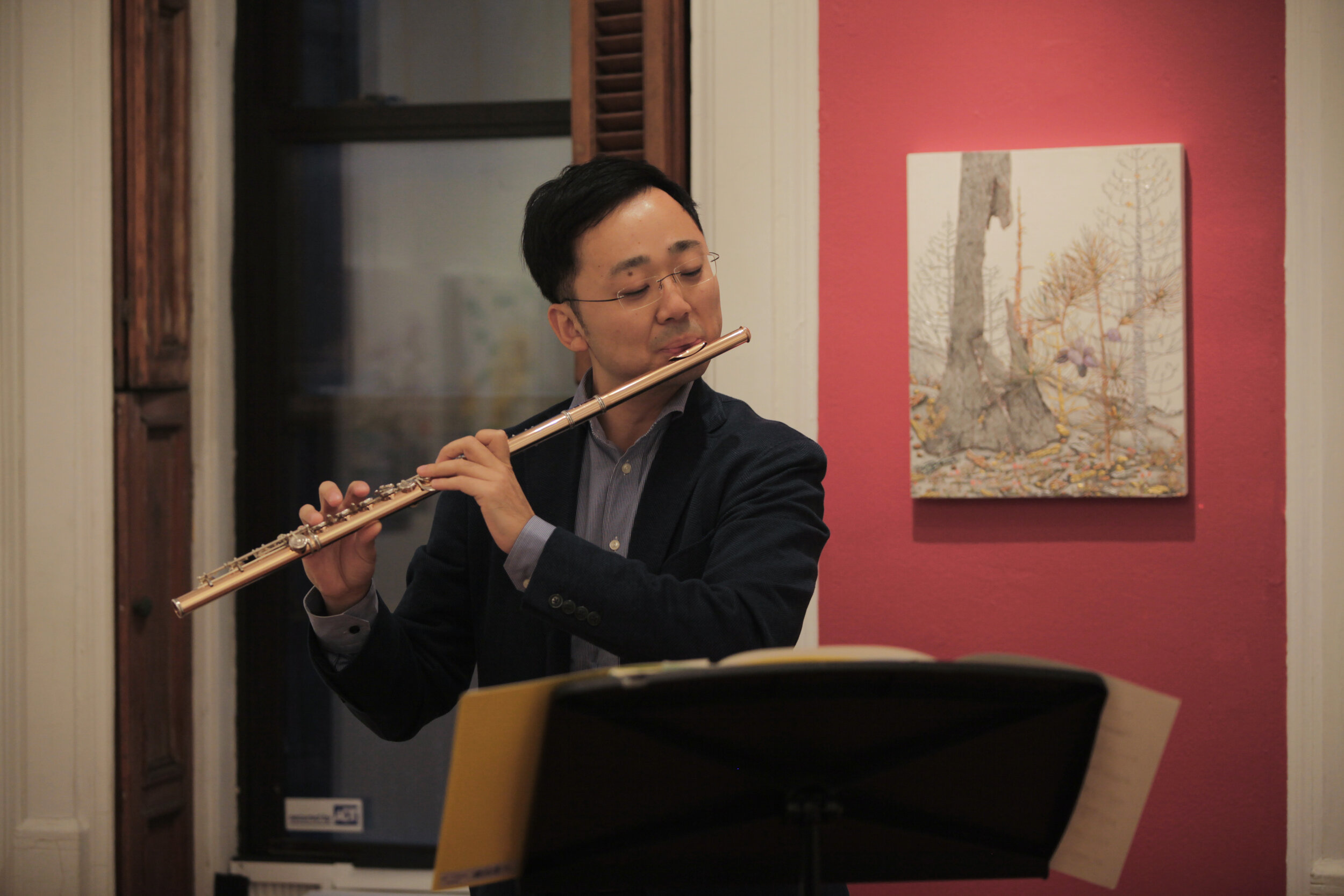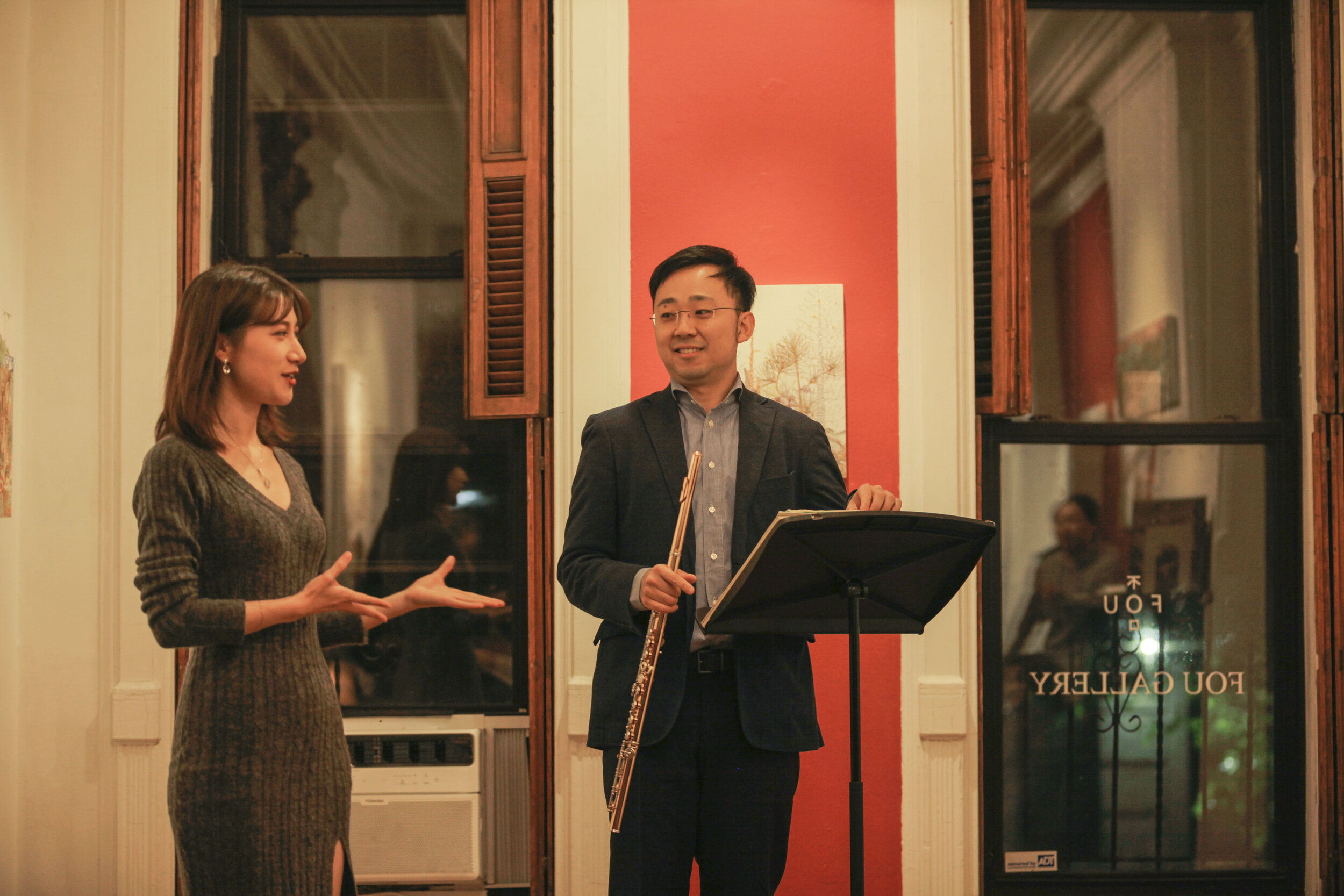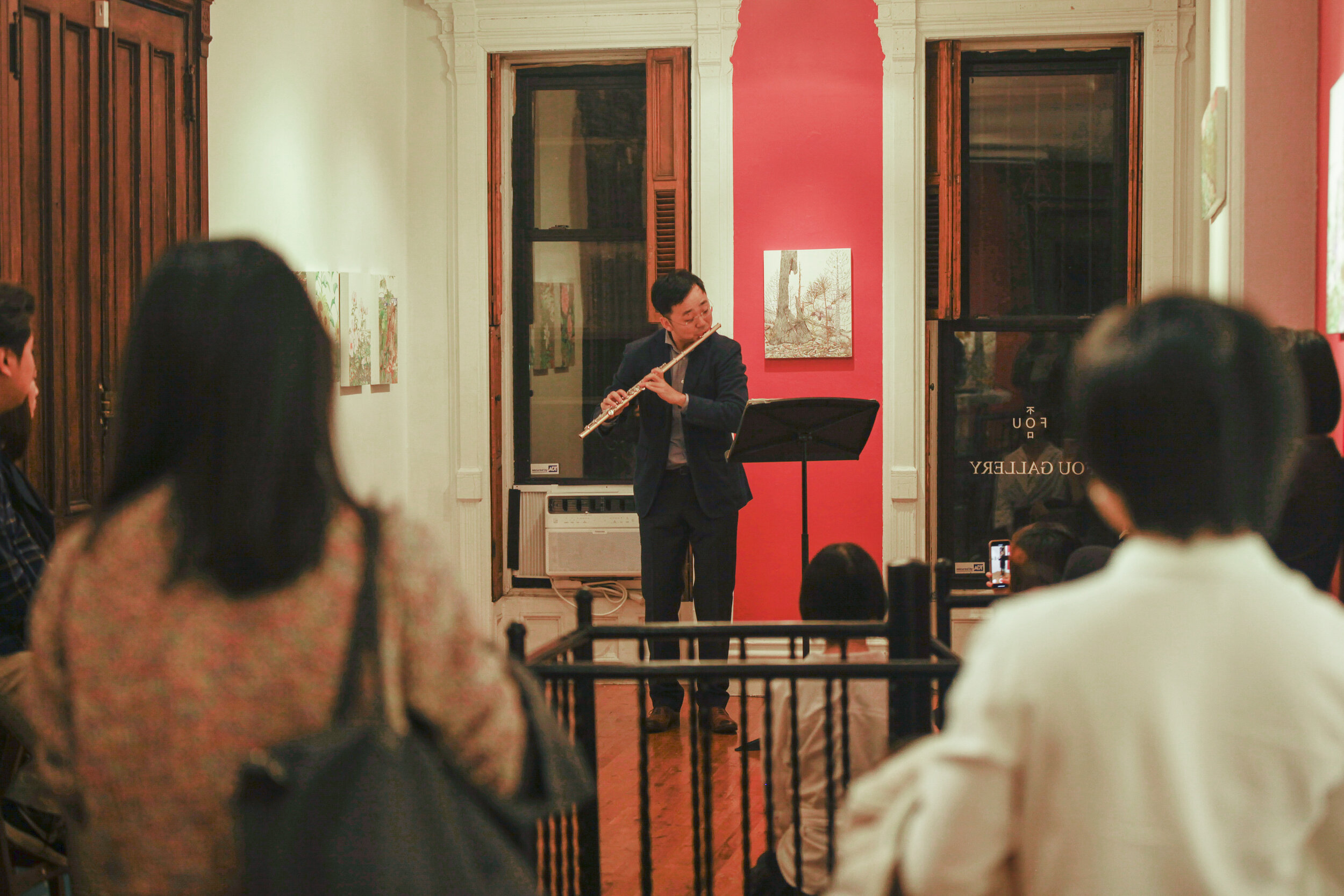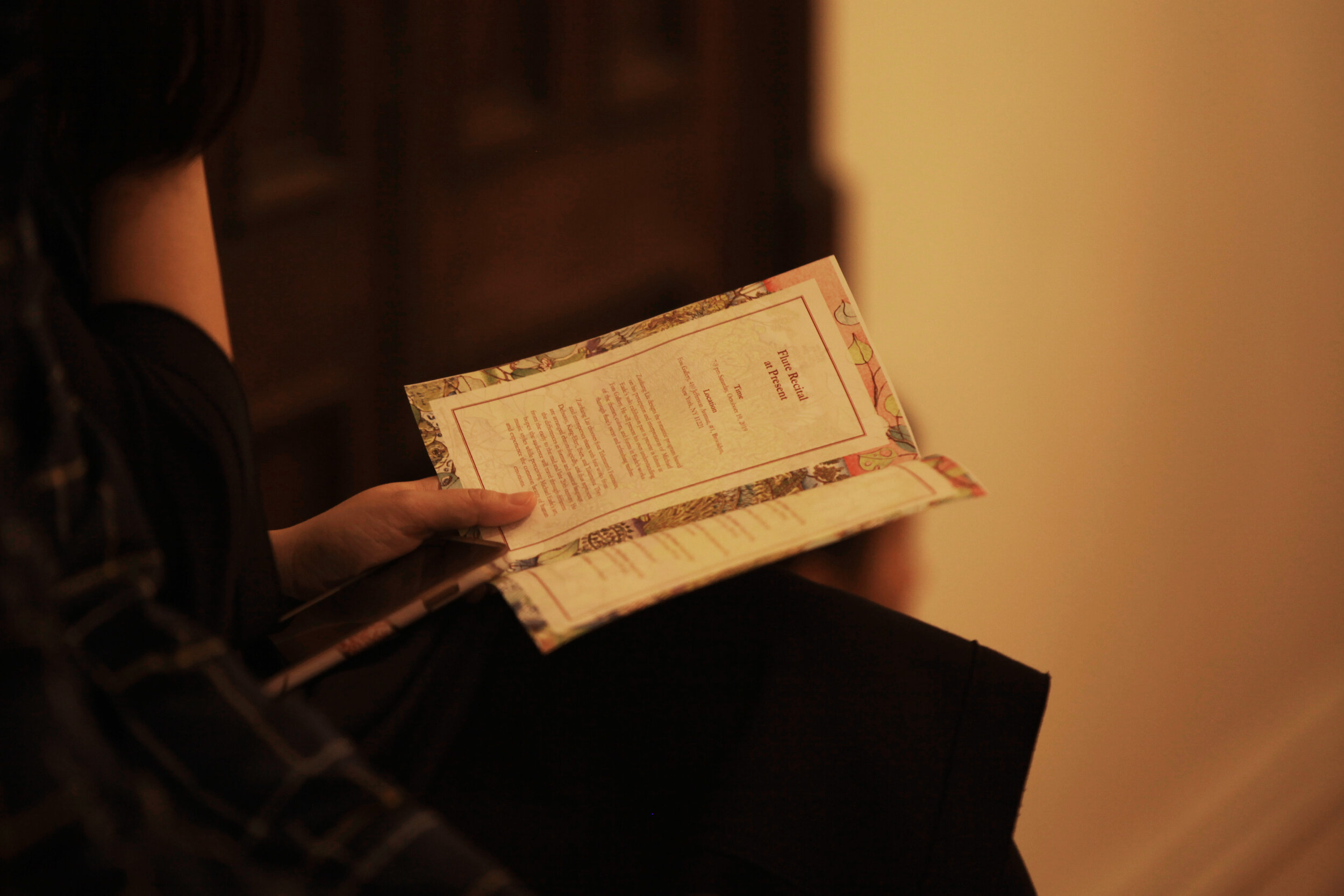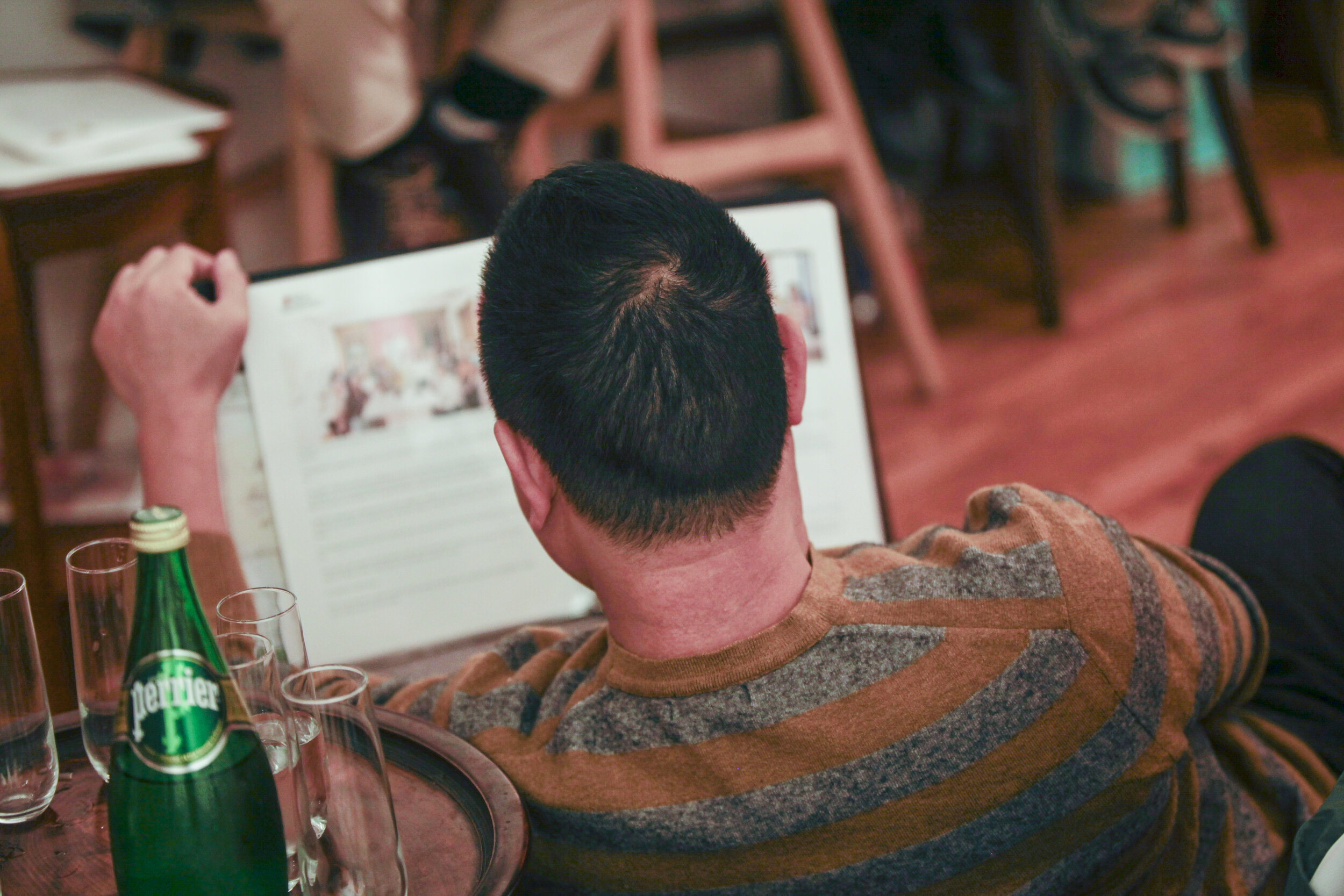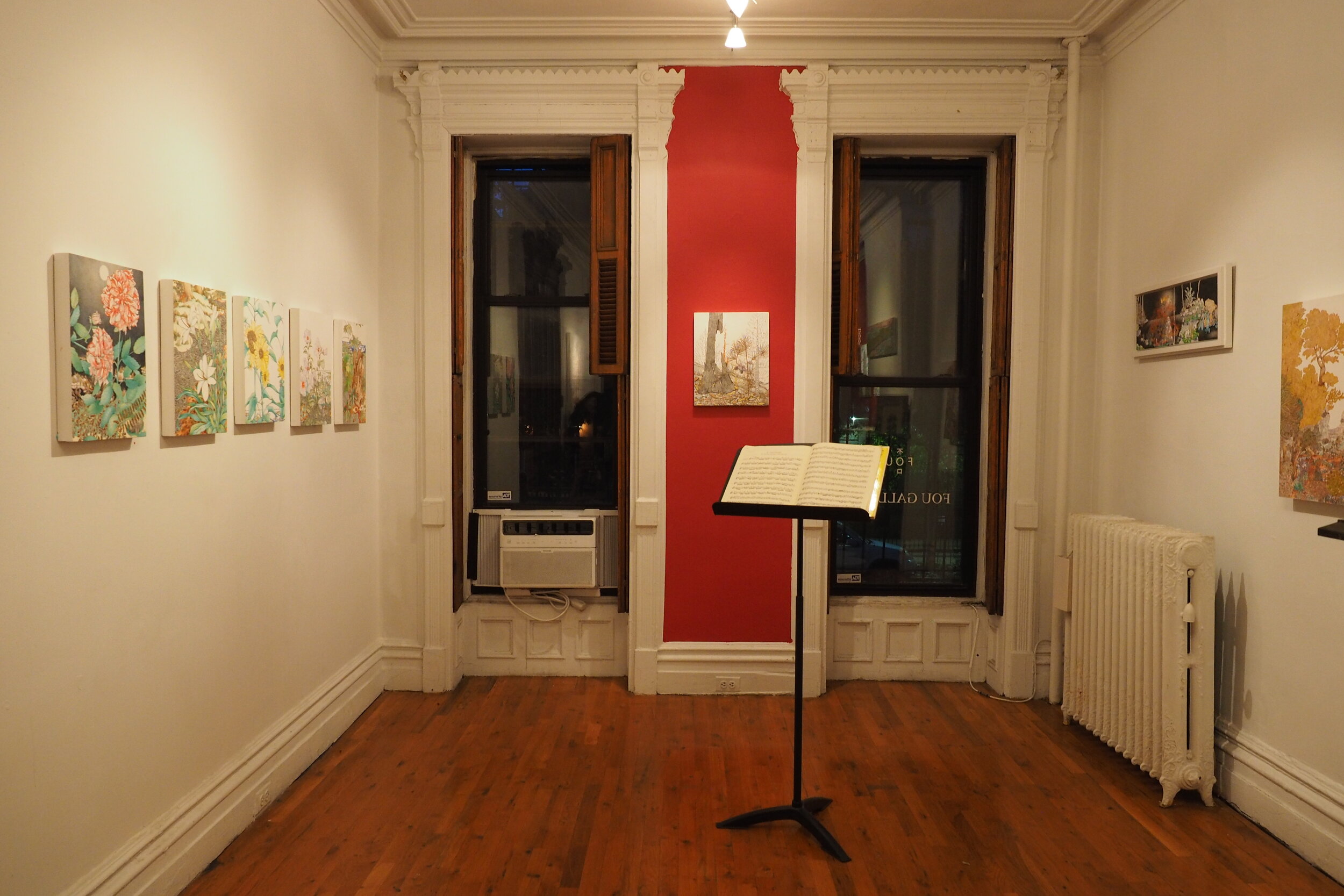Zuoliang Liu Flute Recital at Present
自然之音——刘作亮长笛独奏音乐会
Poster Design: Lynn Hai | 海报设计:海良
Time | 时间: 2019.10.19 (周六), 7–9 pm
Location | 地点: Fou Gallery, 410 Jefferson Avenue, #1, Brooklyn, New York, NY 11221
Musician | 演奏音乐家: Zuoliang Liu 刘作亮
Program Planner | 活动策划人:Lynn Hai 海良
Ticket | 票价:$12
Maximum number of participants | 人数限额:25
CLICK to RSVP
New York - Fou Gallery is delighted to invite you to join our Flute Recital at Present at 7-9 pm on Saturday, October 19th. The flutist Zuoliang Liu is a Ph.D. candidate at the Manhattan School of Music in New York. He has appeared on many prestigious stages and competitions around the world, including Carnegie Hall, Lincoln Center, Kennedy Center of Performing Arts in Washington D.C, and the Kobe International Flute Competition.
Installation view of Micheal Eade: past is present is future, photo credit to Nadia Peichao Lin, © Micheal Eade, courtesy Fou Gallery.
Zuoliang Liu will bring us solo flute music works composed by Debussy, Telemann, Toru Takemitsu, and etc. Liu designs the romantic program based on his perception and interpretation of Michael Eade's solo exhibition past is present is future at Fou Gallery. He will present his own understanding of the themes, colors, and forms in Eade’s works through flute’s sweet and refreshing timbre. Throughout history, artists and musicians never stop pursuing perfection in self-expressing and achieving the ideal. Zuoliang Liu chooses four Telemann’s Fantasias, and intersperses them with four works from Debussy, Karg-Elert, Ibert, and Takemitsu. They are arranged chronologically, and thus represent the differences in format and musical language from the early to the mid and late 20th century. He hopes the audience will travel through different music styles while perceiving Michael Eade’s art, and experience the common beauty of human emotions.
The 12 Flute Fantasias by Georg Philipp Telemann (1682-1767) were published in Hamburg, Germany, in 1732-33. As one of the most important Baroque flute programme, 12 Fantasias exclude some difficult tunes in typical Baroque music, but include fugues and French overtures that are specifically difficult for flute.
Claude Debussy (1862-1918), as one of the most important composers in the 20th century, provides a new musical language for later composers by developing his own style of harmony and orchestral coloring. In 1913, Debussy created Syrinx for the third act of the French novelist Gabriel Mourey's opera Psyché. Syrinx doesn’t require extreme proficient skills in playing, but the flexible changes of flute timbre to express its core emotions.
German composer Sigfrid Karg-Elert (1877-1933) is not broadly well-known, but his Sonata Appassionata is one of flute players’ favorites. Unlike Debussy's Syrinx, Sonata Appassionata inherits the styles and musical languages of the late Romantic Era. Karg-Elert, as a Harmonium player, creates strong and direct orchestral colouring in this sonata.
Jacques Ibert (1890-1962)’s Piéce for solo flute is an interesting and exquisite work. Styled as natural and concise, it is a typical French flute work in the early 20th century.
Toru Takemitsu (1930-1996) is one of the most important composers in the late 20th century. His programming of orchestral coloring, and his exploration in flute with flutist Auréle Nicolet, has been widely praised in history. As the last flute work composed in his life, Air represents his musical experiments on interpreting natural elements.
Installation view of Micheal Eade: past is present is future, photo credit to Nadia Peichao Lin, © Micheal Eade, courtesy Fou Gallery.
Program
Georg Philipp Telemann - Fantasie for Flute without Bass in A major, TWV 40:2
Claude Debussy - Syrinx for Flute solo
Georg Philipp Telemann - Fantasie for Flute without Bass in G major, TWV 40:12
Sigfrid Karg-Elert - Sonata Appassionata for Flute solo in f sharp minor
Installation view of Micheal Eade: past is present is future, photo credit to Nadia Peichao Lin, © Micheal Eade, courtesy Fou Gallery.
Georg Philipp Telemann - Fantasie for Flute without Bass in B flat major, TWV 40:5
Jacques Ibert - Pièce for Flute solo
Georg Philipp Telemann - Fantasie for Flute without Bass in G minor, TWV 40:13
Toru Takemitsu - Air, for Flute solo
纽约 - 否画廊诚邀您参加10月19日周六晚7-9点的长笛独奏古典音乐会。长笛演奏者刘作亮是纽约曼哈顿音乐学院的在读博士,曾多次在著名音乐厅和比赛演奏,过往演出经历包括纽约卡内基音乐厅、林肯中心、华盛顿肯尼迪中心、神户国际长笛比赛等。
刘作亮将带来德彪西、泰勒曼、武满彻等作曲家创作的长笛音乐作品。这一套充满浪漫气息的曲目选择源于刘作亮对否画廊正在进行的迈克尔·伊德个展《刹那》的直观感受,他将以长笛清亮优美的音色演绎自己对伊德作品的主题、色彩、形式的解读。不论古今艺术家、创作者们使用何种艺术形式,其表达自我、追寻理想的脚步从未停下过。刘作亮选择了四首泰勒曼的幻想曲,并在其间穿插四首来自德彪西、卡格-埃勒特、伊贝尔、武满彻的作品,按照创作年份排列,自然形成了长笛作品从20世纪初到中后期的风格与音乐语言的变化。他希望观众在不同的音乐语言穿梭,同时欣赏和体悟迈克尔·伊德的艺术作品,由此体会到其相通的最自然与直接的人性感受。
泰勒曼(Georg Philipp Telemann, 1682-1767)的12首长笛幻想曲于1732-33年出版于德国汉堡。作为最重要的长笛巴洛克曲目之一,12首幻想曲在调式的选择上避开了于巴洛克长笛上较难的曲调。但在曲式上运用了在长笛上较难演奏的赋格,法国序曲等等。
德彪西(Claude Debussy, 1862-1918)作为20世纪最重要的作曲家之一,其对音乐色彩的运用为之后的作曲家提供了新的音乐语言。1913年,德彪西为法国文学家慕雷(Gabriel Mourey)的戏剧《生灵》(Psyché)的第三幕创作了《牧神之笛》(Syrinx)。作品对于技巧的要求并不高,而音色的变化则是这首作品表达情感的最恰当的载体。
德国作曲家齐格弗里德·卡格-埃勒特(Sigfrid Karg-Elert, 1877-1933),并不为太多听众所熟知。但是他的《热情奏鸣曲》(Sonata Appassionata)则是长笛演奏者们的最爱之一。不同于德彪西的《牧神之笛》(Syrinx),《热情奏鸣曲》(Sonata Appassionata)是一首延续了晚期浪漫主义音乐语言的作品。而卡格-埃勒特作为簧风琴(Harmonium)演奏家,曲中色彩的变化更加直接。
雅克·伊贝尔(Jacques Ibert, 1890-1962)的长笛小品是一首有趣而又精致的曲目。旋律自然,曲式简洁,是典型的20世纪初的法国长笛作品的风格。
武满彻(Toru Takemitsu, 1930-1996)是20世纪后期最重要的作曲家之一。他对音色的理解,尤其是与长笛家尼柯莱(Auréle Nicolet)共同对于长笛音色的探索成为历史上的佳话。而《曲调》(Air)作为他一生最后创作的长笛作品,展示了其对自然元素的探索。
MUSICIAN: Zuoliang Liu
Zuoliang Liu has appeared on many prestigious stages and competitions around the world, including Carnegie Hall and Lincoln Center. He had been selected twice as the flute fellow of Bowdoin International Music Festival. He started studying flute at the age of 7, later admitted into the Middle School Affiliated to Shanghai Conservatory of Music. He received his Bachelor's Degree from Shanghai Conservatory of Music and a Master Degree from Manhattan School of Music. He is now pursuing his Doctoral degree in Music Arts in Manhattan School of Music under the guidance of Linda Chesis.
音乐家:刘作亮
刘作亮曾多次在著名音乐厅和比赛演奏,过往演出经历包括纽约卡内基音乐厅和林肯中心等,并两次入选鲍登国际音乐节成员。他从7岁开始学习长笛,后考入上海音乐学院附中。之后,他获得了上海音乐学院的音乐学士学位和曼哈顿音乐学院的音乐硕士学位,现为曼哈顿音乐学院木管声部首席琳达·切西斯(Linda Chesis)女士的在读博士研究生。

